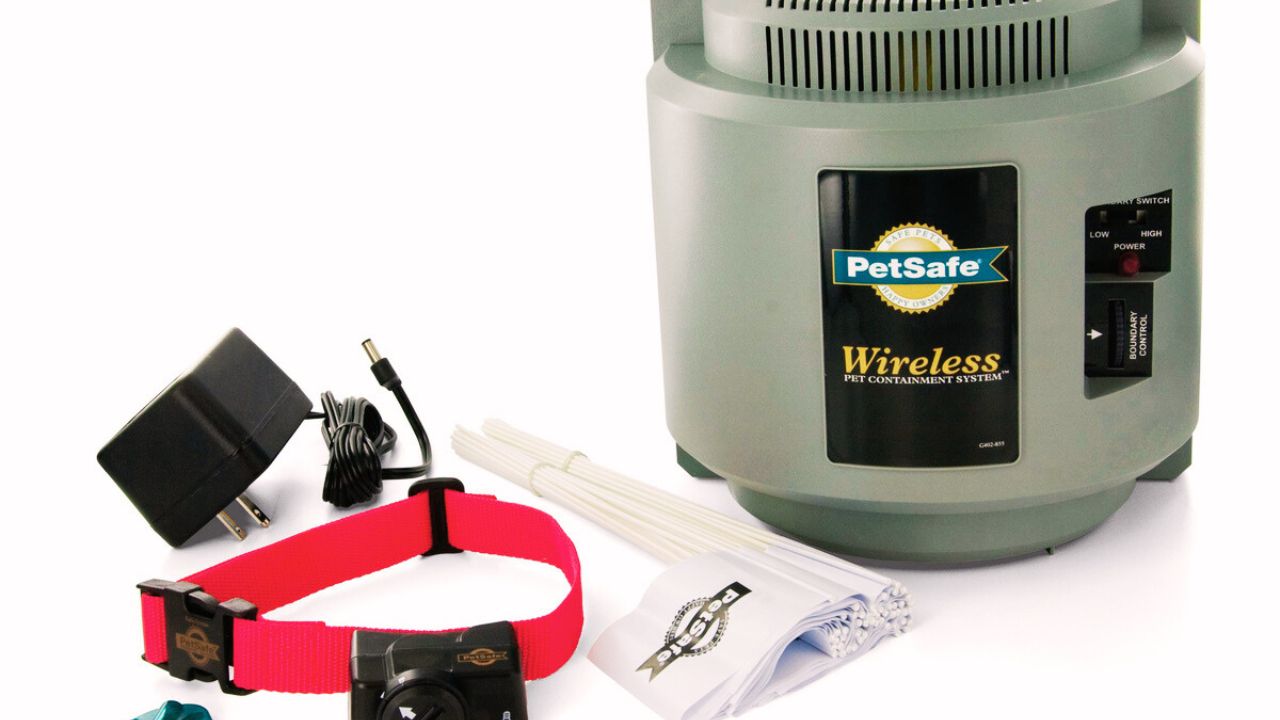| Summary: Petsafe wireless fence troubleshooting: If your PetSafe Wireless Fence isn’t working, first check power connections, signal interference, and collar battery. Relocate the transmitter, reset the system, and test boundaries. Clean collar contacts, replace batteries, and avoid metal obstructions. If issues persist, contact PetSafe support or consider upgrading to a newer model. |
A PetSafe Wireless Fence is a convenient and effective way to keep your pet within a designated area without the need for physical barriers. However, like any electronic device, it can experience problems that prevent it from working correctly.
If your PetSafe Wireless Fence is not functioning properly, this petsafe wireless fence troubleshooting guide will help you identify and fix common issues. Whether the transmitter isn’t working, the boundary is inconsistent, or the collar is not responding, this guide covers step-by-step solutions to get your system running again.
To decide whether a collar or harness is best for your Dachshund, check out this helpful guide: Which is the best choice for a Dachshund, collar or harness?
Blog Highlights
ToggleUnderstanding How the PetSafe Wireless Fence Works
Before troubleshooting, it’s important to understand how the PetSafe Wireless Fence functions.
Components of the System
- Wireless Transmitter – Sends out a circular radio signal to create a boundary.
- Receiver Collar – Worn by the pet, it detects the boundary signal and provides a warning beep or static correction if the pet gets too close.
- Boundary Range Settings – Allows adjustments to increase or decrease the containment area.
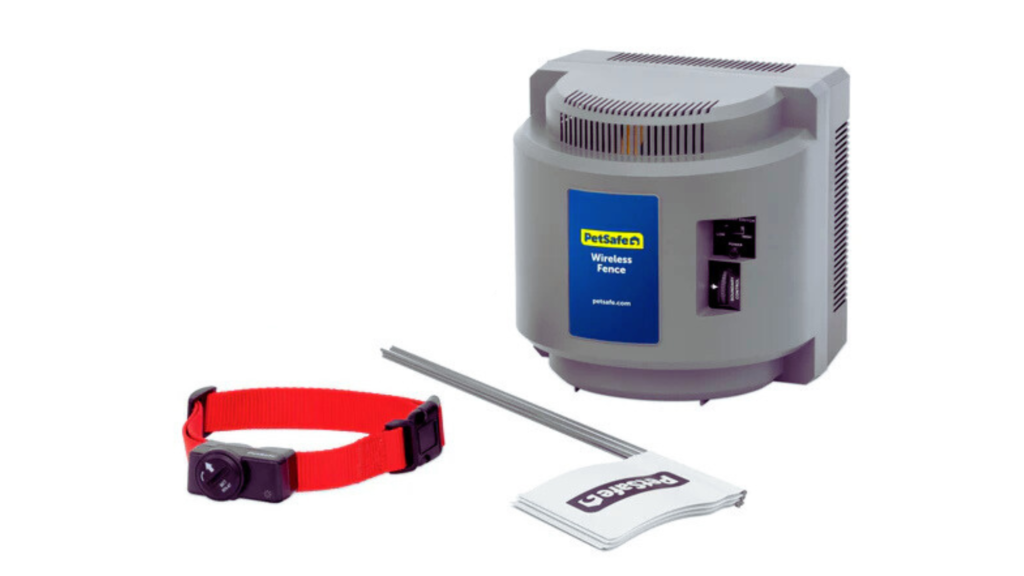
Common Reasons for Malfunctions
- Power supply issues
- Signal interference
- Boundary inconsistencies
- Collar-related problems
- Environmental factors like weather and terrain
Get insights into Collar or harness: what works best for Dachshunds? for their safety, comfort, and health during walks.
Common Issues and Petsafe Wireless Fence Troubleshooting Steps
1. The Transmitter Won’t Power On
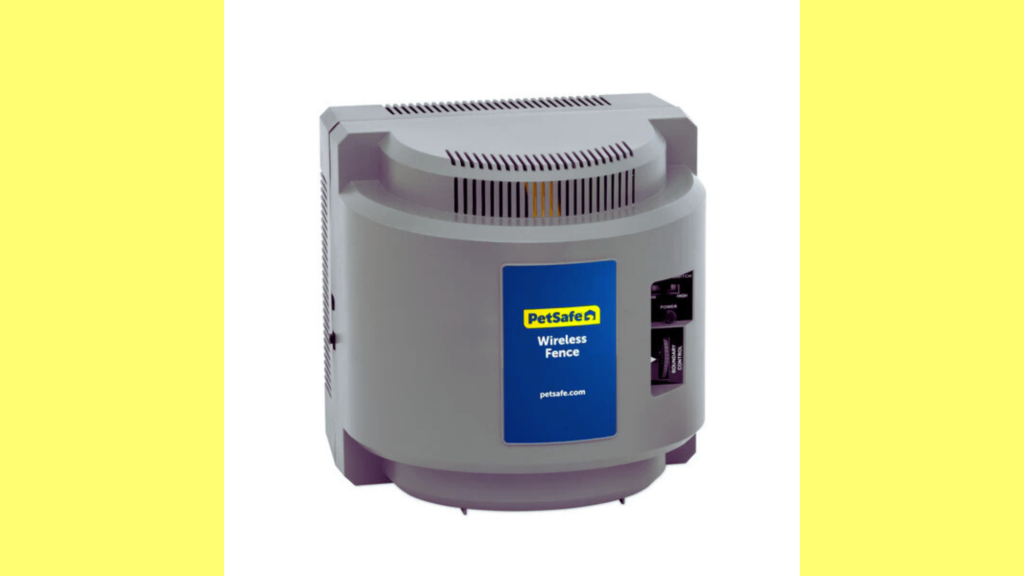
If the transmitter does not turn on, it may be due to power-related issues.
Possible Causes
- Faulty power outlet
- Damaged power adapter or cord
- Blown fuse or tripped circuit breaker
- Internal damage to the transmitter
Solutions
- Check if the outlet is working by plugging in another device. If the outlet is faulty, try a different one.
- Inspect the power adapter and cord for damage. If frayed or loose, replace it.
- Reset the transmitter by unplugging it for five minutes, then plugging it back in.
- If the transmitter was exposed to a power surge, it may have internal damage. Consider using a surge protector to prevent future issues.
2. The Transmitter is On, But There’s No Signal
If the power light is on but the transmitter is not sending a signal, it may be due to a signal blockage or interference.
Possible Causes
- The boundary control dial is set too low
- Metal objects or thick walls blocking the signal
- Interference from electronic devices
Solutions
- Increase the boundary size setting on the transmitter.
- Ensure the transmitter is placed away from large metal objects such as refrigerators, filing cabinets, and metal walls.
- Keep the transmitter at least three feet away from electronic devices like Wi-Fi routers, TVs, and microwaves.
- If using an extension cord, plug the transmitter directly into a wall outlet to avoid power fluctuations.
3. The Boundary is Inconsistent or Shifting
If your pet receives corrections in different locations or the boundary randomly shifts, signal interference or environmental factors may be causing the problem.
Possible Causes
- Fluctuating radio signals due to interference
- Changes in the environment (weather, metal objects, terrain)
- Power fluctuations affecting the transmitter
Solutions
- Keep the transmitter indoors in a temperature-controlled environment.
- Remove any metal objects or large obstacles that may be affecting the signal.
- Test the boundary regularly by walking with the receiver collar and marking the boundary’s position.
- Plug the transmitter into a dedicated power source rather than a shared outlet.
4. The Collar is Not Responding to the Transmitter
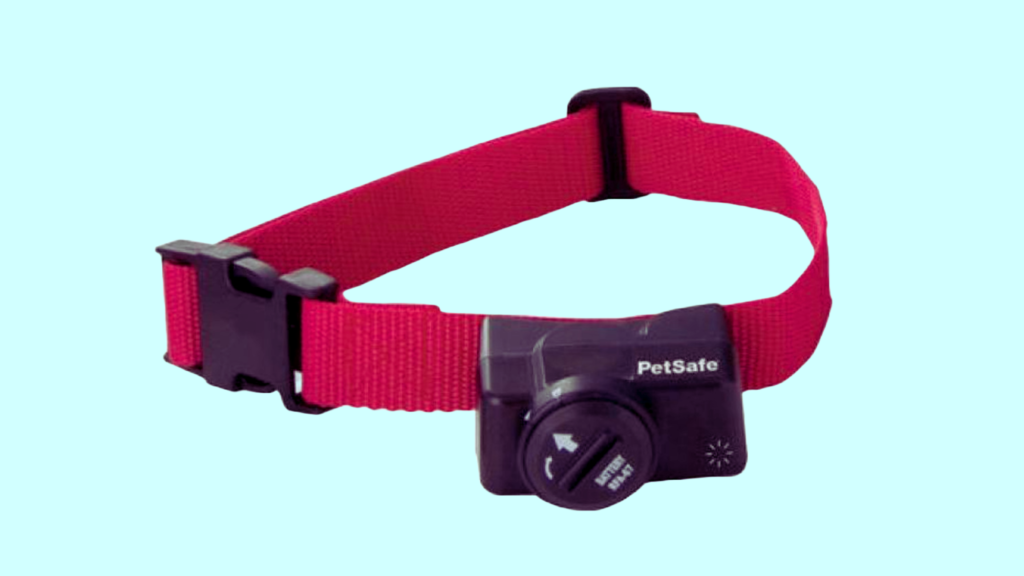
If the collar is not beeping or providing corrections, even when your pet crosses the boundary, the issue may be with the collar itself.
Possible Causes
- Dead or improperly installed battery
- Collar not synced with the transmitter
- Loose or dirty contact points
Solutions
- Replace the collar battery and ensure it is correctly installed.
- If the collar is still unresponsive, try re-pairing it with the transmitter following the manufacturer’s instructions.
- Clean the contact points on the collar to remove dirt or debris that may interfere with detection.
- Test with another receiver collar to determine if the issue is with the collar or transmitter.
5. The Transmitter is Beeping Continuously
A continuously beeping transmitter indicates an error that needs to be addressed.
Possible Causes
- Broken boundary wire (for wired models)
- Power supply fluctuations
- Overheating or internal component failure
Solutions
- If the transmitter is overheating, unplug it and let it cool before restarting.
- Reset the unit by unplugging it for ten seconds, then plugging it back in.
- Refer to the PetSafe manual to identify the error code based on the beeping pattern.
- If the beeping continues after troubleshooting, contact PetSafe customer support.
Advanced Troubleshooting Techniques
1. Checking for Less Common Transmitter Issues
Some hidden factors may cause the PetSafe transmitter to malfunction.
Signs of a Failing Transmitter
- The unit gets hot to the touch after extended use
- The system works intermittently
- The boundary signal fluctuates without any environmental changes
How to Diagnose the Issue
- Place the transmitter in a different location and see if performance improves.
- Listen for clicking or buzzing noises, which may indicate internal failure.
- Use a voltage stabilizer to regulate power if your home experiences frequent power fluctuations.
Find the Top dog collars for Dachshunds that accommodate their long bodies and prevent strain on their necks.
2. Repairing vs. Replacing the Transmitter
If the transmitter is damaged, you may need to repair or replace it.
When to Attempt Repairs
- Loose internal wires (if the case can be opened safely)
- Dust buildup causing overheating
- Power adapter failure (try replacing it)
When to Replace the Transmitter
- The unit does not power on even after trying multiple outlets
- Frequent connectivity issues
- The transmitter is more than five years old and experiencing repeated failures
Preventative Maintenance for a Long-Lasting System
To avoid future problems, follow these maintenance tips:
- Keep the transmitter in a stable environment – Avoid exposure to extreme temperatures or moisture.
- Regularly check power connections – Ensure cords are not frayed or loose.
- Test the boundary monthly – Walk around with the receiver collar to ensure the signal is working correctly.
- Replace batteries on time – A dead collar battery can cause training inconsistencies.
- Use a surge protector – Protects against power surges and electrical damage.
Alternative Containment Solutions If Problems Persist
If you continue experiencing problems with your PetSafe Wireless Fence, you might consider alternative pet containment solutions.
1. Upgrading to a Newer PetSafe Model
Newer wireless fence models offer better reliability and advanced features.
Recommended upgrades:
- PetSafe Stay & Play Compact Wireless Fence – Offers an extended range and better signal stability.
- PetSafe YardMax In-Ground Fence – Provides a more precise and consistent boundary.
2. Switching to a Wired Fence for More Stability
A wired fence system may be a better option if wireless signals are unstable in your area.
Benefits of a wired fence:
- More consistent boundaries
- No risk of signal interference
- Works well in areas with metal structures
3. Using a GPS-Based Containment System
GPS dog fences eliminate the need for a transmitter and can provide more flexible boundary options.
Advantages of GPS fences:
- No physical transmitter required
- More customizable boundary zones
- Works in large or irregular areas
Get insights into What’s the ideal choice for a Dachshund: collar or harness? for their safety, comfort, and health during walks.
Advanced Troubleshooting and Optimization for Your PetSafe Wireless Fence
If you’ve tried basic troubleshooting and your PetSafe Wireless Fence is still not working, it may be time to dive into advanced diagnostics and optimization techniques. Some issues require in-depth fixes, while others can be prevented with long-term maintenance strategies.
1. Diagnosing Complex Signal and Boundary Issues
If the boundary line is unstable, shifts randomly, or creates unexpected correction zones, signal interference or environmental factors may be causing problems.

Understanding Signal Interference
The PetSafe Wireless Fence relies on a radio signal to establish a circular boundary. If this signal is interrupted or distorted, the boundary may become inconsistent or unreliable.
Common Causes of Signal Interference
- Metal structures or objects near the transmitter (fences, vehicles, appliances)
- Wi-Fi routers, cordless phones, and other wireless devices interfering with the radio signal
- Dense trees, walls, or uneven terrain affecting signal propagation
- Nearby power lines or underground utilities that create electronic disturbances
Solutions to Improve Signal Stability
- Place the transmitter in a central, open location, away from walls or metal surfaces.
- Keep the transmitter at least three feet away from other electronic devices that could cause interference.
- If possible, move large metal objects like refrigerators or toolboxes away from the transmitter area.
- Adjust the boundary size dial slightly to see if a minor change helps stabilize the signal.
2. Fixing Inconsistent Collar Corrections
A receiver collar that delivers unpredictable corrections or fails to warn the pet before issuing a static correction can create confusion and stress for your pet.
Common Causes of Inconsistent Collar Behavior
- Weak or dying collar battery
- Loose or dirty contact points preventing proper skin contact
- The collar being too loose or too tight
- A malfunctioning receiver unit
How to Fix Collar Issues
- Check and replace the battery if the collar response is inconsistent.
- Clean the metal contact points with a dry cloth or alcohol wipe to remove dirt, sweat, and debris.
- Adjust the fit of the collar—it should be snug, allowing two fingers between the collar and your pet’s neck.
- Test the collar by walking to the boundary and listening for the warning beep. If no sound occurs, the collar may need reprogramming or replacement.
If the collar continues to malfunction, try using a different receiver collar to determine whether the issue is with the collar or the transmitter.
To discover what activities bring joy to Australian Cattle Dogs, check out this detailed guide on What excites Australian Cattle Dogs?
3. How Weather Conditions Affect Wireless Fence Performance
Weather conditions can impact how well your PetSafe Wireless Fence functions.
Effects of Weather on Wireless Fences
- Heavy rain or snow can weaken or distort the radio signal.
- Strong winds may move objects that interfere with the boundary.
- Extreme heat or cold can affect battery performance in the receiver collar.
Solutions for Weather-Related Problems
- Keep the transmitter indoors and ensure it stays dry and cool.
- Regularly check the boundary line during extreme weather to ensure it remains stable.
- Use a weather-resistant cover for the transmitter if placed in a garage or shed.
- Replace the collar battery more frequently in cold weather to ensure optimal performance.
4. Resetting and Re-Syncing the System for a Fresh Start
If your PetSafe Wireless Fence is still malfunctioning, resetting the system can help clear any minor errors.
Step-by-Step Guide to Resetting the PetSafe Wireless Fence
- Turn off the transmitter and unplug it from the power source.
- Remove the receiver collar battery and wait for 30 seconds.
- Plug the transmitter back in and turn it on.
- Reinsert the battery into the receiver collar and wait for the indicator light.
- Test the system by walking to the boundary with the collar and checking for the warning beep.
If the boundary signal is still inconsistent, perform a full system reconfiguration by setting up the transmitter as if it were new.
5. Preventative Maintenance for Long-Term Reliability
Regular maintenance can prevent major issues and extend the lifespan of your PetSafe Wireless Fence.
Key Maintenance Practices
- Inspect and replace batteries every 3–6 months to ensure reliable performance.
- Keep the transmitter and collar clean to avoid dust buildup affecting performance.
- Test the boundary once a month by walking with the receiver collar to ensure it works correctly.
- Secure the transmitter in a stable location to prevent accidental movement or damage.
6. When to Replace or Upgrade Your Wireless Fence
If you’ve tried all troubleshooting steps and your wireless fence still isn’t functioning, it may be time to consider a replacement or upgrade.
Signs That Your System Needs Replacing
- The transmitter frequently shuts off or fails to maintain a stable signal.
- The receiver collar no longer responds consistently, even with new batteries.
- The boundary fluctuates excessively, creating unpredictable correction zones.
- The system is more than five years old and has experienced multiple failures.
Upgrading to a More Reliable Model
If you need a more advanced containment system, consider these options:
- PetSafe Stay & Play Wireless Fence – Offers a larger coverage area and improved signal stability.
- PetSafe YardMax In-Ground Fence – Provides a more precise boundary using a buried wire system.
- SpotOn GPS Dog Fence – Uses GPS technology to create a flexible boundary with no physical transmitter.
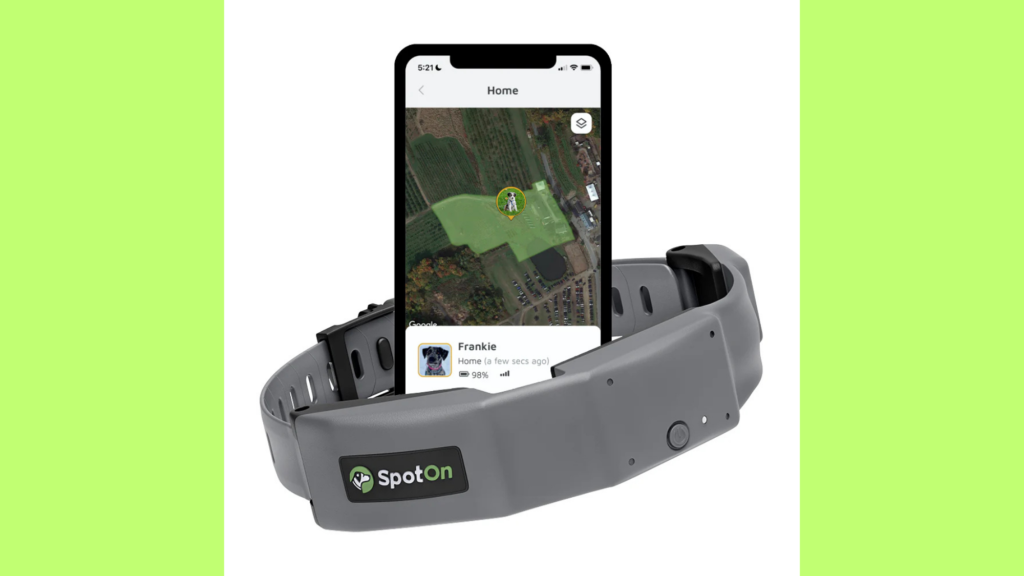
Upgrading to a newer model can eliminate recurring issues and provide a more reliable and customizable pet containment solution.
Final Thoughts: Ensuring Your PetSafe Wireless Fence Works Efficiently
If your PetSafe Wireless Fence is not working, following these petsafe wireless fence troubleshooting steps can help resolve most issues. Whether it’s a power failure, boundary inconsistency, or collar malfunction, identifying the root cause is the key to fixing the problem.
By using preventative maintenance and considering alternative solutions when necessary, you can keep your PetSafe system functioning properly and ensure your pet stays safe within the designated boundary.
Find out Which is the best collar color for a Rottweiler? to complement their bold appearance and highlight their unique features.

